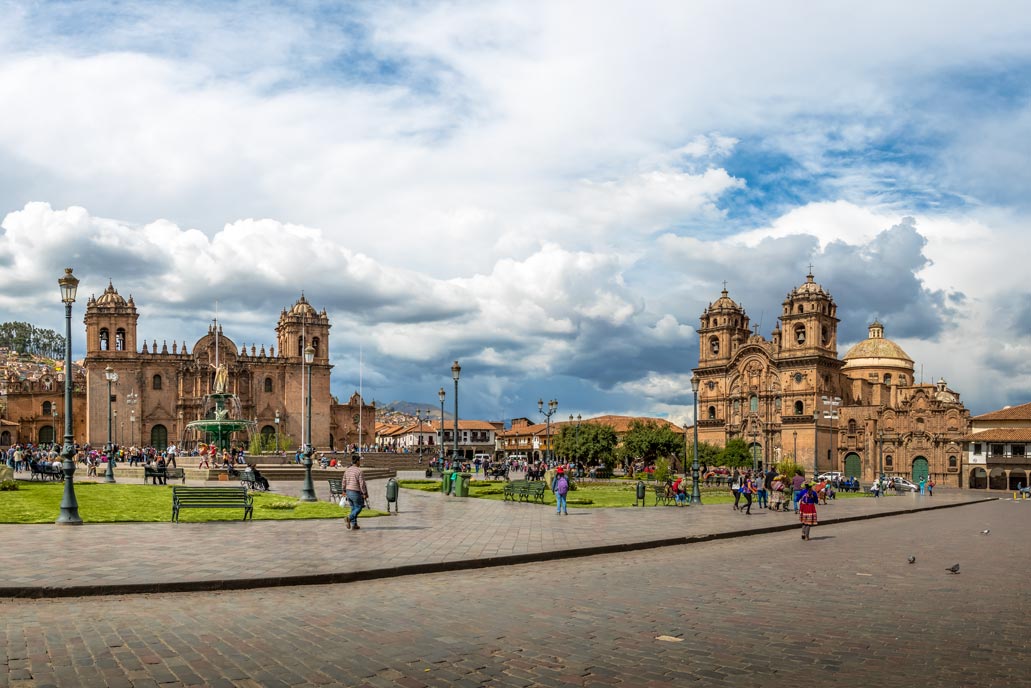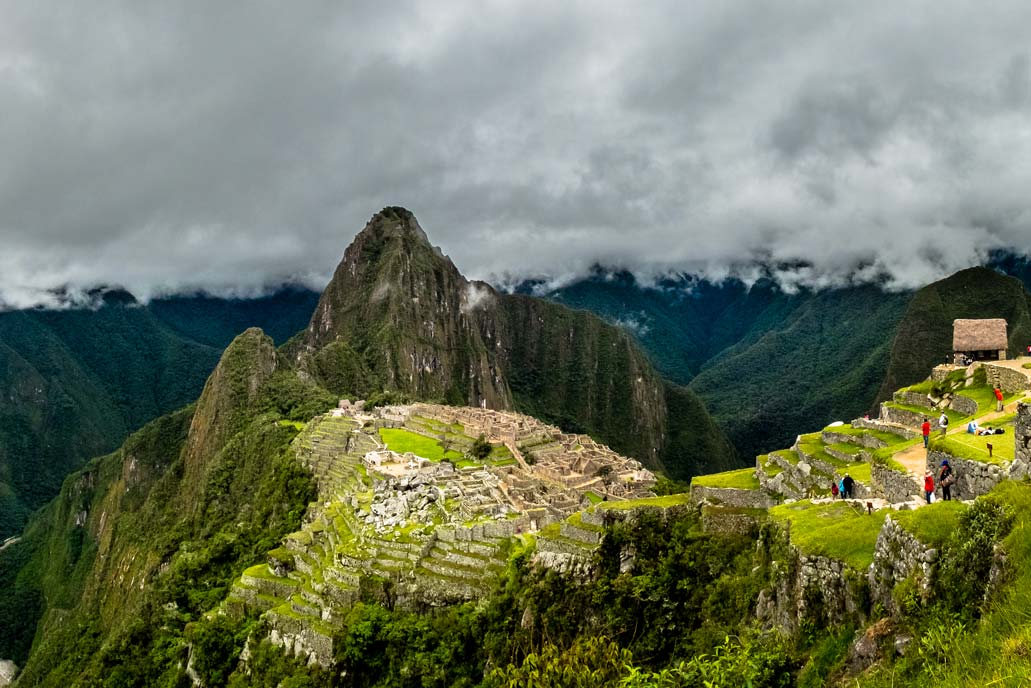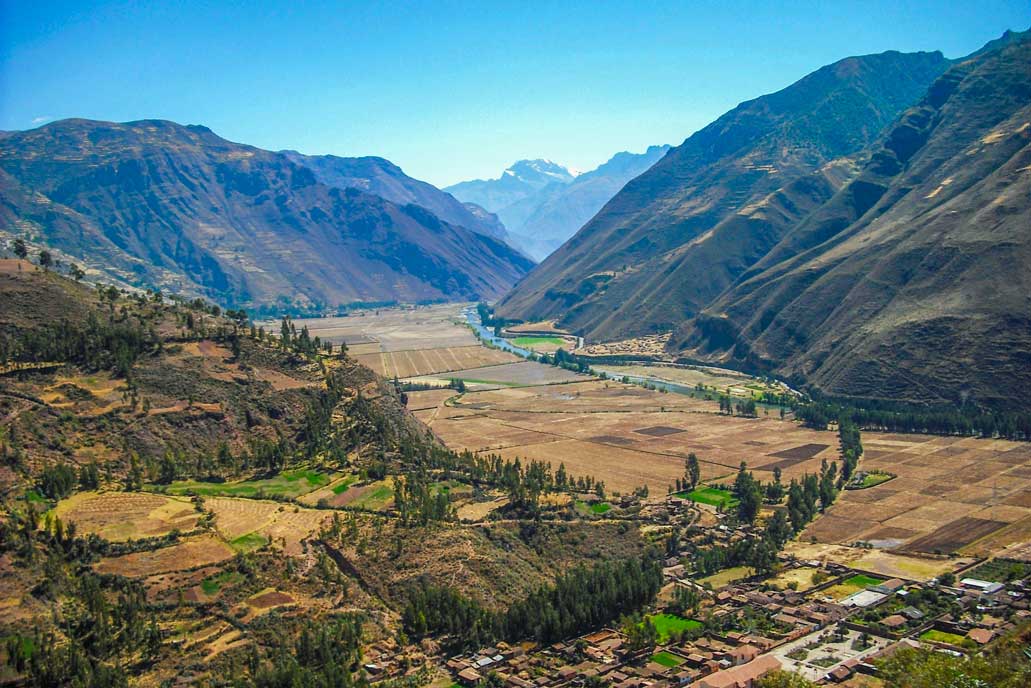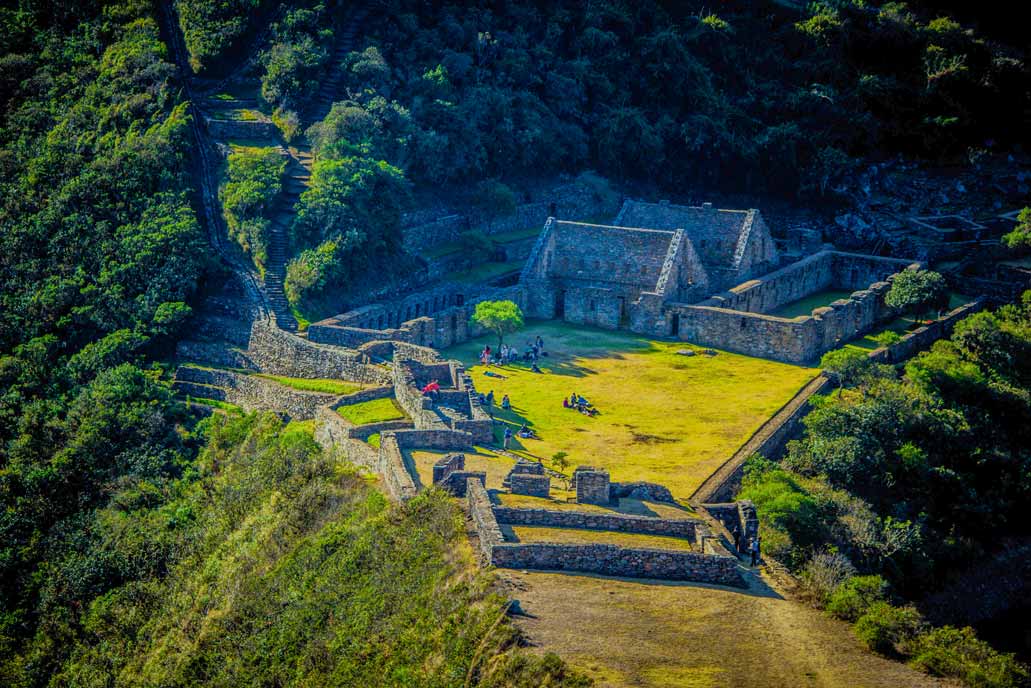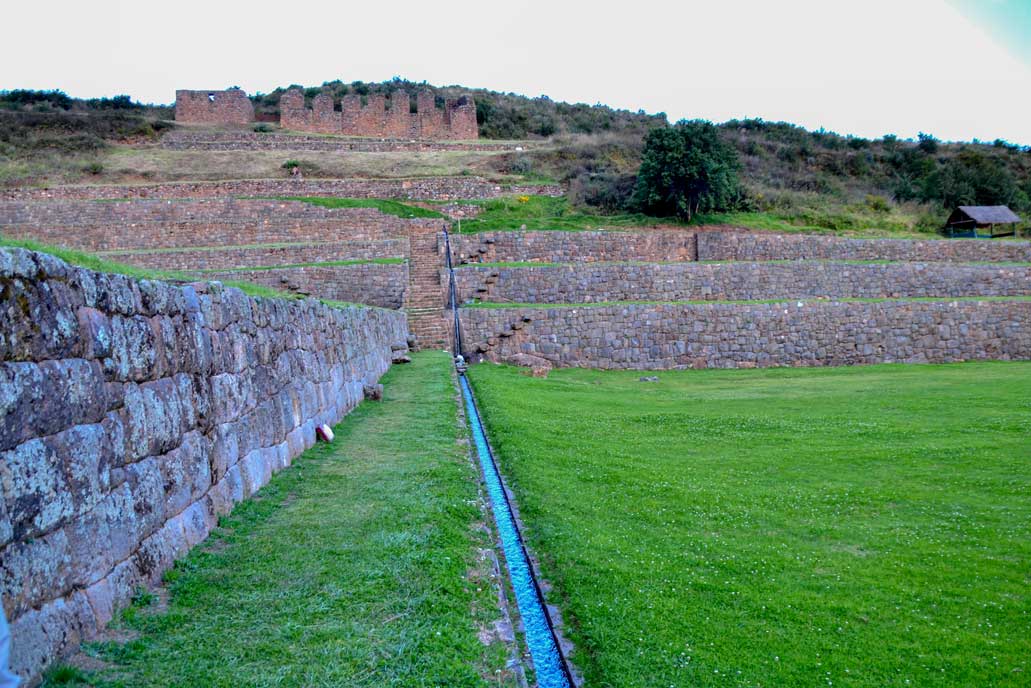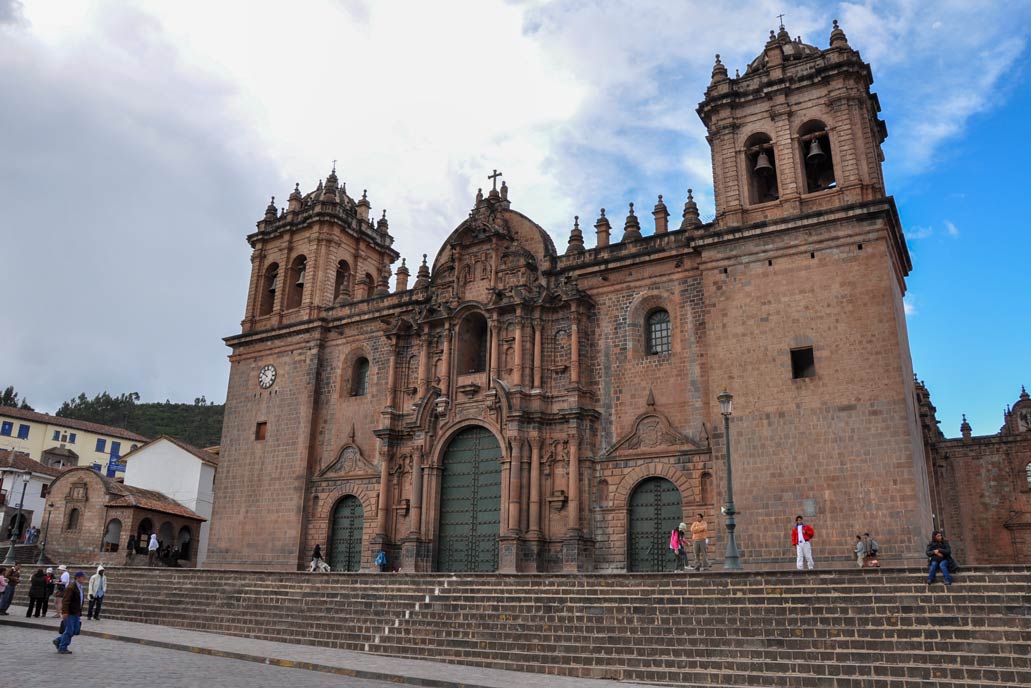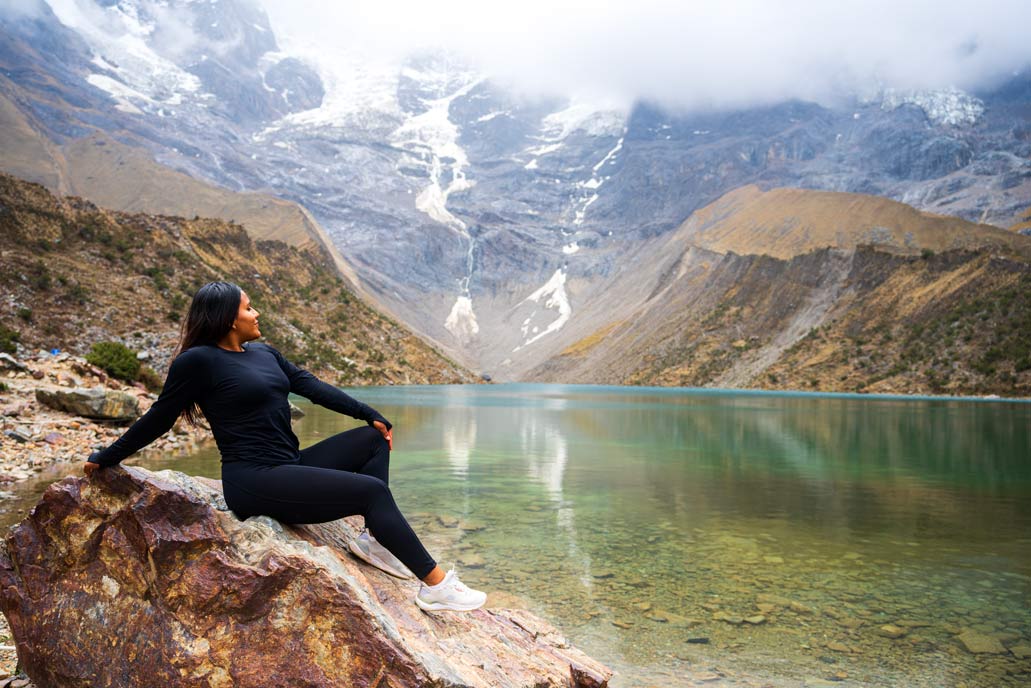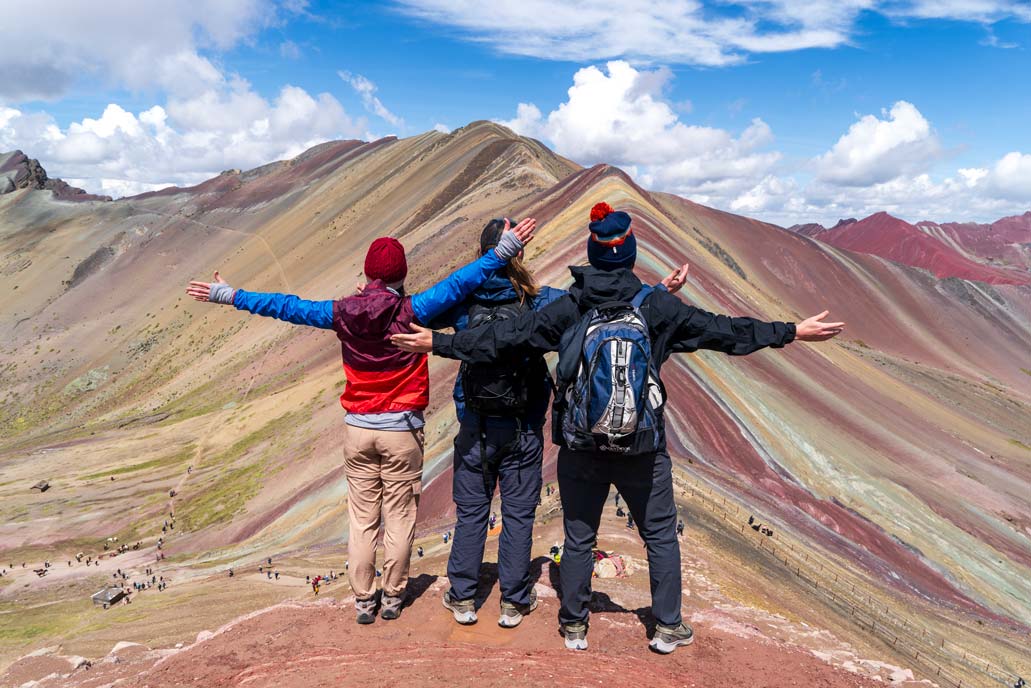The highest tourist attractions of Cusco
Cusco is located in the Andes Mountains of Cusco, Peru. Its capital is the city of Cuzco, capital of the Inca Empire, one of the most historic places in the world. In addition, this Andean region has several popular tourist attractions. Highlights: the Sacred Valley of the Incas, the 7 Colors Mountain, the Humantay Lagoon, the South Valley of Cusco, the Inca city of Choquequirao and, of course, Machu Picchu, one of the 7 Wonders of the Modern World. At what altitude are each of these tourist attractions. Know their elevation and recommendations for a smooth trip.
Content
The Salkantay trek, route through the high mountains and jungle of Cusco – The Salkantay trek 5 days is one of the best trekking routes in Peru. It covers 70 kilometers through incredible landscapes, a stretch of high mountain and another through the jungle of Cusco until arriving at Machu Picchu. On the route you will visit very high landscapes such as the Humantay lagoon (4,200 masl) or the Salkantay mountain pass (4,600 masl). In addition, the hiker enters the high jungle of Cusco through fascinating places such as the thermal baths of Cocalmayo (1,511 masl) or the town of Aguas Calientes (2,040 masl). On the route the visitor spends the night in comfortable lodges where meals are included. The final destination is Machu Picchu (2,430 masl). Due to the beautiful scenery, the challenging trek and the quality of the campsites, the Salkantay trek is one of the best treks to Machu Picchu, along with the famous Inca Trail 4 days.
Machu Picchu
Machu Picchu is located in the high jungle of Cusco, in the Vilcabamba mountain range, at an altitude of 2,430 meters above sea level. However, most of its mountains are at different altitudes. As, for example, the Machu Picchu mountain, the highest in the place, with a height of 3,082 meters above sea level. Or the Huayna Picchu mountain whose summit is at 2,693 meters above sea level. Or the small mountain Huchuy Picchu, at an altitude of 2,497 meters above sea level. The Intipunku, the Sun Gate, is located at 3,900 meters above sea level. Or the town of Aguas Calientes, also called Machu Picchu village, at an altitude of 2,040 masl.
Unlike the different tourist attractions of Cusco, Machu Picchu has a tropical geography with high green mountains, due to the heavy rains and the geography not so high but on the way to the jungle. The visitor can enjoy a more temperate climate with sunny days. A maximum temperature of 24ºC. and, if you spend the night in the town of Aguas Calientes, a minimum temperature of 12ºC. That is to say, it is a not so cold tourist destination. On the contrary, during the route it is recommended to wear light clothing and always keep a poncho in case of rain.
- Recommendations during the visit – Machu Picchu is not at an altitude that causes symptoms of altitude sickness. However, due to the many stone steps on the trails, the visitor may become agitated because of its altitude. It is only recommended to go slowly according to the physical condition of each visitor.
- More information – The 4-day Inca Trail to Machu Picchu is a trekking route that runs 39 kilometers along the historic qhapac ñan (Inca trails). During the hike, the highest point is the so-called ‘dead woman’s pass’, at an elevation of 4,200 meters above sea level. On the last day, Machu Picchu is reached through the Intipunku or Sun Gate (3,900 masl).
The Sacred Valley of the Incas
The Sacred Valley of the Incas is located in a beautiful valley on the banks of the Vilcanota River, also called Urubamba, in an area close to the city of Cusco. This Andean area encompasses several towns and, consequently, several altitudes. The most important towns are Urubamba and Ollantaytambo, both located at 2,871 masl and 2,792 masl, respectively. In addition, the town of Pisac is located at 2,900 masl. The highest point is in the town of Chinchero, located at 3,762 masl. A few kilometers away is the town of Maras, at an altitude of 3,300 masl.
As its name indicates, the Sacred Valley of the Incas was an area considered sacred by the Incas. There, the Incas built their most important agricultural terraces and imposing stone citadels. The current archaeological sites of Pisac, Chinchero, Ollantaytambo and Moray stand out. All these tourist destinations have a lot of culture and tradition. Visitors like to stay in the town of Urubamba (2,871 masl) due to its good climate and the good quality of its tourist services, such as hotels and restaurants.
- Recommendations during the visit – If you visit Cusco it is recommended to stay, even once in the town of Urubamba. There you can find 2, 3, 4 and 5 star hotels. Due to its location in a warm valley and surrounded by mountains, it is an opportunity to disconnect from the big cities.
- More information – You can visit the Sacred Valley of the Incas with the 1 day tour that includes the visit to the archaeological sites of Pisac, Ollantaytambo and Chinchero. There is also a complete tour that offers, in addition to these, the visit to the salt mines of Maras and the circular terraces of Moray.
Choquequirao
Choquequirao is an Inca archaeological site known as ‘Machu Picchu’s sacred sister’ due to the similar architectural beauty with the famous Inca city. However, Choquequirao is located higher, in a high mountain geography of difficult access. It is located at 3,033 meters above sea level, in the foothills of the imposing Salkantay snow-capped mountain, on the border of the Cusco and Apurimac regions. The Incas also built Inca roads connecting both citadels, which are 115 kilometers apart on average.
To get to Choquequirao there are no trains or buses. You can only get there through a trekking route of at least 3 days, or about 31 kilometers (62 kilometers round trip). During this famous hike, different altitudinal levels are crossed, such as Rosalina Beach (1,550 masl), the lowest point, or the Marampata camp (3,000 masl). In Choquequirao the visitor will find an immense Inca city with squares, stairways, sacred enclosures, temples and even an Inca cemetery. And the best thing is that the visitor will be almost alone with this great Inca city.
- Recommendations during the visit – The Choquequirao trek can be done with an all-inclusive tour or on your own. Doing it with a tour will always be the safest option because it includes everything you need: pick up, transportation to the starting point, camping equipment, cooking equipment, horse porters and entrance fees.
- More information – In addition to the Choquequirao trek, there is a 7 or 8 day trekking route that links this Inca site with none other than Machu Picchu. This trekking route is one of the longest in Cusco (115 kilometers).
The South Valley of Cusco
The South Valley of Cusco is one of the less famous tourist destinations of Cusco but offers many archaeological sites of great importance. It is named after a mountainous geographical area neighboring the waters of the Vilcanota River, located southeast of the city of Cusco. It stands out for its landscapes, mountains and, above all, for its Inca and pre-Inca archaeological sites, such as Tipon (3,560 masl) and Piquillacta (3,250 masl). Also, there you can visit a beautiful colonial church in the town of Andahuaylillas (3,121 masl). This church is also called the Sistine Chapel of America.
The South Valley of Cusco has a lot of history because it was in this part of the Cusco region where the Incas arrived from the Altiplano in the 12th century. Tipon was an important Inca religious center while Piquillacta was a huge city of the pre-Inca Wari culture (450 and 1000 AD). The best way to get to know these destinations is through the Cusco South Valley 1 day tour, which also includes a visit to the church of Andahuaylillas. The South Valley of Cusco is a little known destination but worth visiting.
- Recommendations during the visit – During the route to the South Valley of Cusco you will also visit the village of Oropesa, which is famous for its delicious breads. Do not miss the opportunity to take one with you.
- More information – The tour to the South Valley of Cusco lasts only half a day, from 8:00 am to 2:00 pm.
The city of Cusco
Cusco was the capital of the Inca empire. It is located in the eastern part of the Andes Mountains, about 1,101 kilometers by road from the city of Lima. Its name comes from the Quechua word ‘Qosqo’ which means ‘center’ or ‘navel’ of the world. This city has several tourist attractions at different altitudes. The Plaza de Armas is located at 3,399 meters above sea level. The Sacsayhuaman fortress is located at 3,700 meters above sea level. The Inca temple of Coricancha is at 3,690 masl.
In the city of Cusco is the main airport of the region so there are the best hotels and restaurants. During the visit to the city of Cusco do not miss the opportunity to visit the Cathedral and the archaeological sites of Qenqo, Pucapucara and Tambomachay. All these destinations, as well as the Coricancha and Sacsayhuaman, are included in the famous Cusco City Tour. This service is recommended for the first day of the trip. Due to the altitude of Cusco, a previous acclimatization of at least one or two days is recommended before starting the sightseeing tours.
- Recommendations during the visit – One of the novel tourist destinations in the city of Cusco is the Abode of the Gods, located just 12 kilometers away. This place stands out for its sculptures carved in stone of large sizes alluding to the Inca culture.
- More information – The city of Cusco has a wide range of 2, 3, 4 and 5 star hotels. There are also some of the best restaurants in Peru.
Humantay
Humantay is one of the most beautiful lakes in Peru. It is located in the foothills of the imposing Salkantay mountain, the second highest in Cusco, with a maximum altitude of 6,271 meters above sea level. The lake is located at 4,200 meters above sea level, at the foot of the snow-capped peak of the same name. This tourist attraction stands out for its intense turquoise waters, as well as for the mountains and snow-capped peaks that surround it. It is one of the most beautiful photographs that visitors can get in Cusco. In addition, the lagoon was considered sacred by the Incas.
The best way to visit the Humantay lagoon is with a 1 day tour from Cusco or with the famous Salkantay trek 5 days, which includes the visit to the lagoon on the first day. In both cases to reach the lagoon requires a hike of approximately 2 kilometers uphill. The starting point is at the Soraypampa camp, at an altitude of 3,900 meters above sea level. That is to say, on the way to the lagoon you will climb an average of 300 meters.
- Recommendations during the visit – The Salkantay trek, besides the visit to the Humantay lagoon, includes the visit to beautiful tourist sites such as the Salkantay pass, the thermal baths of Cocalmayo and Machu Picchu.
- More information – Humantay was a place considered sacred by the Incas. It is believed that there they performed ceremonies of payment to the earth or Pachamama.
7 Colors Mountain
The 7 Colors Mountain is one of the most beautiful tourist attractions of Cusco. Its Quechua name is Vinicunca which means ‘narrow-necked hill’. It is located in the high mountains near the snow-capped Ausangate, the highest in Cusco, at 6,384 meters above sea level. The Rainbow Mountain is located at 5,200 meters above sea level. Nearby is the Red Valley, another tourist destination at 5,253 masl. From Vinicunca to the Red Valley there is a distance of 500 meters.
To visit the 7 Colores Mountain you must hike an average of 3 kilometers. The starting point is at the Phulawasipata camp, located at 4,800 meters above sea level. The route to Vinicunca is a great challenge for visitors due to the high Andean geography. The way to visit it is with the 1-day 7 Colors Mountain tour, which starts at 5 in the morning and ends at 6 in the afternoon.
- Recommendations during the visit – It is recommended to visit Vinicunca on the penultimate or penultimate day of your visit to Cusco. This is to achieve a better acclimatization to the high altitude.
- More information – Vinicunca is the second most visited tourist destination in Cusco, only after Machu Picchu.
By Machupicchu Terra – Last updated, November 14, 2024
